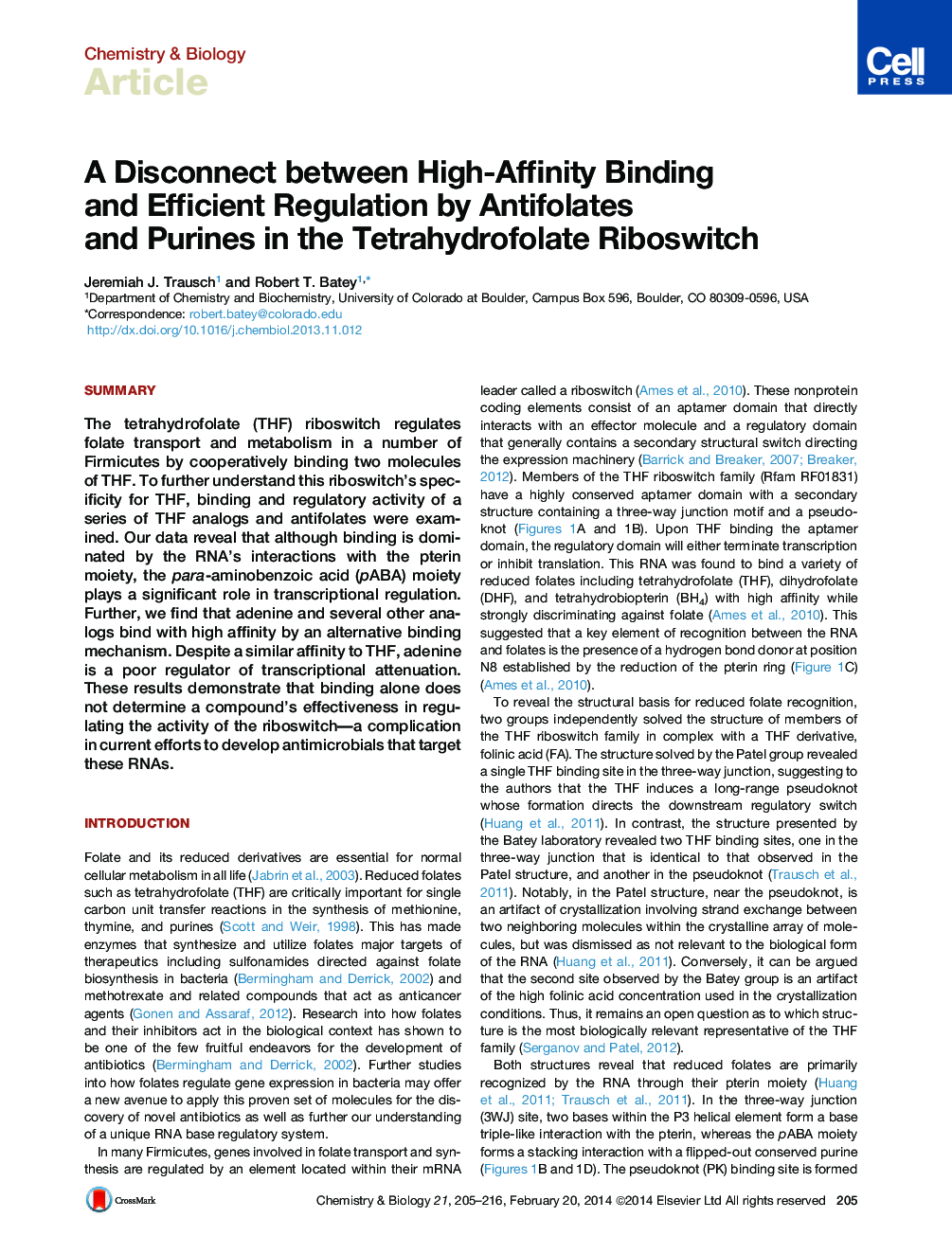| Article ID | Journal | Published Year | Pages | File Type |
|---|---|---|---|---|
| 1393650 | Chemistry & Biology | 2014 | 12 Pages |
•Though most THF riboswitches contain two binding sites, one is not vital for function•The pABA moiety of THF greatly enhances regulatory activity, but not binding affinity•Some well-established antifolates can regulate the riboswitch’s activity•Adenine and derivatives exhibit “retro-binding” to the THF riboswitch
SummaryThe tetrahydrofolate (THF) riboswitch regulates folate transport and metabolism in a number of Firmicutes by cooperatively binding two molecules of THF. To further understand this riboswitch’s specificity for THF, binding and regulatory activity of a series of THF analogs and antifolates were examined. Our data reveal that although binding is dominated by the RNA’s interactions with the pterin moiety, the para-aminobenzoic acid (pABA) moiety plays a significant role in transcriptional regulation. Further, we find that adenine and several other analogs bind with high affinity by an alternative binding mechanism. Despite a similar affinity to THF, adenine is a poor regulator of transcriptional attenuation. These results demonstrate that binding alone does not determine a compound’s effectiveness in regulating the activity of the riboswitch—a complication in current efforts to develop antimicrobials that target these RNAs.
